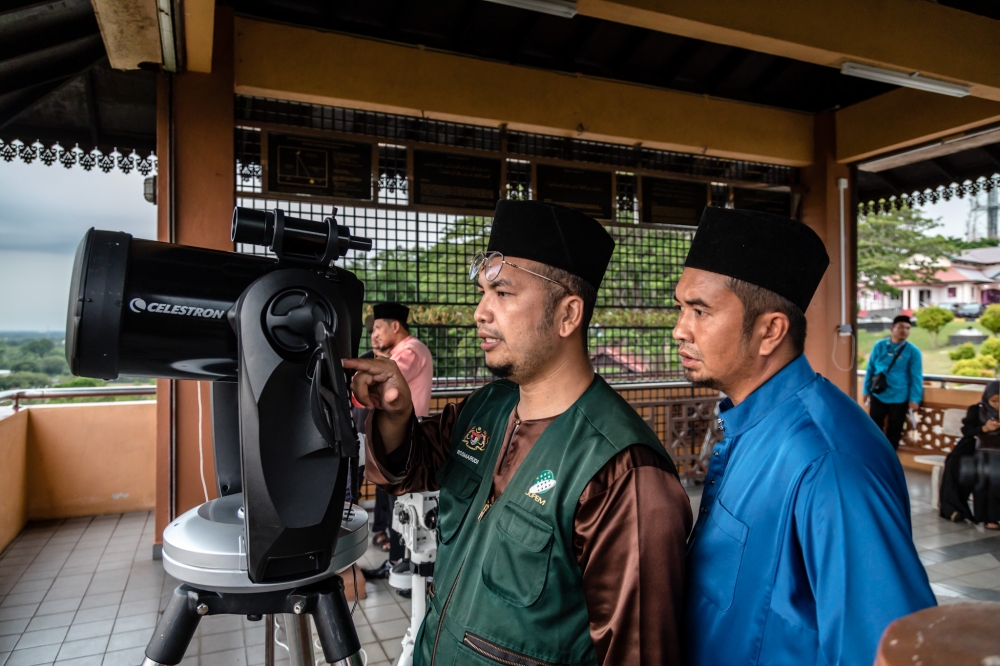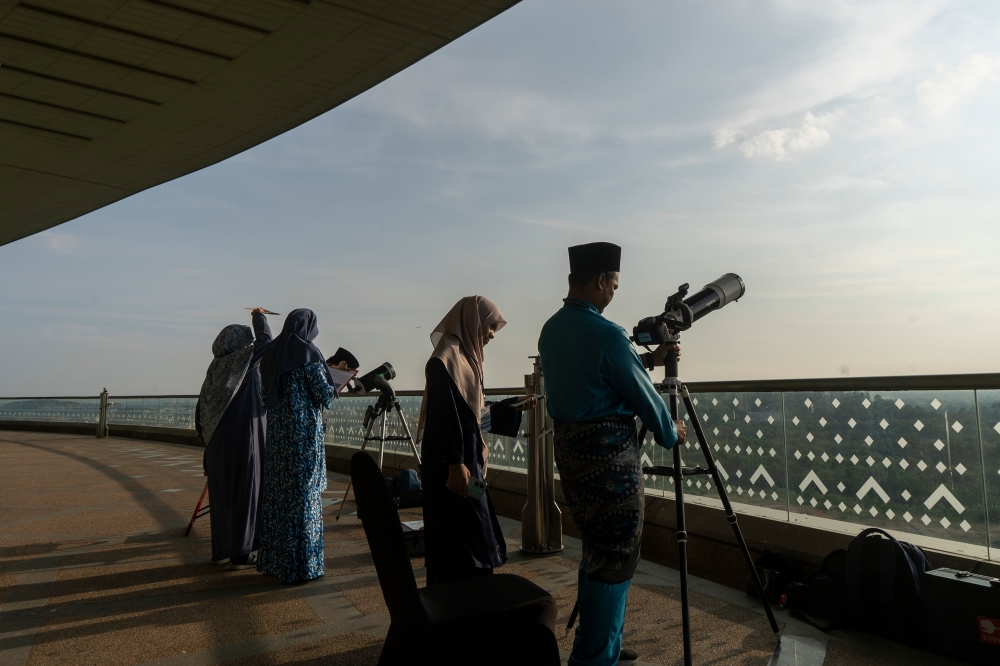KUALA LUMPUR, March 28 — As Ramadan draws to a close, Muslims in Malaysia and around the world are preparing for Aidilfitri.
However, the exact date is only confirmed close to the event, as the Islamic calendar follows the lunar cycle.
There is a possibility that Aidilfitri may fall on Monday, March 31 — or later on Tuesday, April 1. Several states have already prepared an additional holiday on Monday, should Aidilfitri actually falls a day later.
In Malaysia, the date of Aidilfitri is determined using two methods: hisab (calculations or mathematics) and rukyah (moon sighting).
These methods determine the start of Syawal, the Islamic month that marks Hari Raya Aidilfitri.
What are hisab and rukyah?
Hisab is a scientific method that determines the moon’s position through mathematical and astronomical calculations.
This method can predict when the hilal, an Arabic word for crescent moon, should be visible, making it precise and consistent. In Malay, this is referred to as anak bulan, or new moon — the first glimpse of the crescent moon.
On the other hand, rukyah is the traditional practice of physically sighting the new moon at designated locations either using the naked eye, telescopes or both.
If the crescent moon is sighted, the new month begins.
It takes the moon 29.5 days to complete a lunar cycle. As a month cannot have half a day, Islamic months are either 29 or 30 days long — never 31.

How does Malaysia determine Aidilfitri?
Malaysia uses a combination of hisab and rukyah. Calculations predict the moon’s position, but officials still conduct physical observations to confirm the sighting.
The process is managed by the Department of Islamic Development Malaysia (Jakim) and the Conference of Rulers.
This year, the moon sighting for Syawal will take place this Sunday, March 30, and the Keeper of the Rulers’ Seal will announce the official date of Aidilfitri that same night on radio and television.
In Malaysia, it is a popular occasion among families to watch the official announcements together. Each year, those in the Malay community would even play a “game” trying to guess the colour of the Keeper’s baju Melayu.
Moon sighting takes place at 29 official locations nationwide, including Bukit Melawati and Bukit Jugra in Selangor; Baitul Hilal Bangunan Sultan Ismail in Johor; Kampung Pulau Sayak and Alor Setar Tower in Kedah; and KL Tower in Kuala Lumpur.
Malaysia follows the Imkanur Rukyah criteria, which establish whether the moon is visible based on specific conditions:
1. The moon must have been in conjunction (aligned with the sun and earth) before sunset.
2. One of these conditions must be met:
- At sunset, the moon must be at least 2 degrees above the horizon and at least 3 degrees away from the sun.
- By moonset, it must be at least 8 hours old.
If the moon is sighted, Aidilfitri falls the next day. Otherwise, fasting continues for one more day to complete 30 days of Ramadan.

The moon sighting process in Malaysia
- Announcement of sighting date — The Office of the Keeper of the Rulers’ Seal announces the date for moon sighting, usually on the 29th day of Syaaban, Ramadan, or Zulkaedah.
- Observation — State Mufti Departments conduct moon sightings at the designated locations after sunset.
- Reporting and declaration — Observers report their findings to the Keeper of the Rulers’ Seal, who makes the official announcement on whether the new month has begun.
This process ensures that Malaysia’s Islamic calendar remains accurate and consistent.
How do other countries decide?
Different countries use different methods:
Malaysia, Indonesia, Brunei and Singapore use both hisab and rukyah.
In Indonesia, for example — the preferred method differs according to the two major Muslim organisations. Muhammadiyah, for example, relies solely on hisab and has declared way in advance in February that Syawal will be celebrated on March 31. Nahdlatul Ulama, which relies also on rukyah, will decide based on observation.
Turkey and Tunisia rely mainly on hisab.
Pakistan, India and Bangladesh depend mostly on rukyah.
The ‘Raya Terkejut’ of 2022
In 2022, Malaysia experienced what became known as “Raya Terkejut” (the surprise Raya) when Aidilfitri was unexpectedly declared a day earlier than expected.
This was because the crescent moon was sighted at multiple locations, even though astronomical calculations had predicted it would not be visible.
The unexpected announcement led to a last-minute rush to prepare for celebrations.
The event highlighted the importance of rukyah and why both methods are needed.
What to expect this year?
As Ramadan began later this year — on March 2 rather than March 1 as expected — Aidilfitri could still be declared one day later than expected, depending on the moon’s visibility.
Malaysians will have to wait for the official announcement on the night of Ramadan 29 to know whether Aidilfitri falls the next day or if fasting continues for another day.
Regardless of the outcome, the use of hisab and rukyah ensures that the Islamic calendar stays accurate while balancing scientific advancements with tradition.
Recommended reading:



















